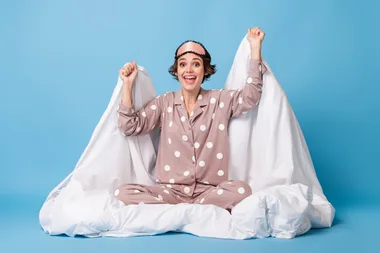Relax while you work out
Yoga is one of the world’s most popular forms of exercise and although its roots are ancient, it’s widely used today to ease the stresses and strains of modern living.
Alex Grant is a Sydney-based yoga practitioner. Here he answers a few questions about yoga.
Q: What is yoga?
A: Yoga is the practice of being in the moment at all times. The Sanskrit word “yoga” literally means to “yoke” or “unite” and all the different aspects of yoga aim to unite the mind and the action so that one can become connected to whatever they are doing.
There are many different ways of practicing yoga, including asana, the physical postures, pranayama, breathing exercises and dhayana, meditation.
Most people practice the physical aspect of yoga which is called hatha yoga, which includes various asanas designed to both stretch and strengthen the body while controlling the breath and focusing the mind.
Q: How does yoga work?
A: By staying in the moment with the physical practice, one is able to develop concentration, which is vital to the more meditative aspects of yoga. By practicing the asanas [physical postures], one is able to keep the body healthy, with many asanas focused on toning the muscles, nervous and endocrine systems. The effect of this is creating a free flow of energy throughout the body. By developing the mind, one is able to keep the thoughts focused on productive ends and not react negatively to problems in life.
Q: Why is it good for you?
A: It can keep the body toned and free from disease; it calms the mind and helps people concentrate. It also gives people more energy.
Q: Who can do it?
A: Anyone can do yoga. The more physical styles such as Bikram, Ashtanga and Iyengar may be more difficult for those in less than perfect physical condition, but if people have trouble with these styles, they can approach more traditional hatha yoga classes, which often focus on gentle asanas and relaxation techniques.
Q: Are there any risks?
A: Yes, most injuries occur when people are not being mindful. If practitioners stay focused on the moment, then there is very little chance of injury; it is when they push themselves and start daydreaming and stop breathing that injuries occur.
Q: How many different types of yoga are there?
A: There are many different styles. Yoga has been traditionally passed on from teacher to student for thousands of years. In the past 100 years, with the embrace of yoga by the West, there has been an explosion in the number of styles. Most are based on several lineages of hatha yoga and most share the same postures. The difference is in the sequencing and pace as well as the focus.
As to the style that is right for you, I advise a new student to sample a few different styles and try to find a teacher they feel comfortable with. In the end yoga is a personal endeavour and the yogi will find what is right for him or her.
Q: Where can I find yoga classes?
A: Yoga is very widely practiced in Australia now, so you could ask at your local gym, look up the Yellow Pages or visit my website: www.findyoga.com.au.
Slideshow: 5-step guide to simple yoga










